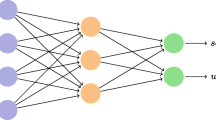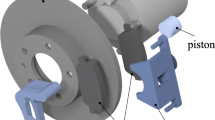Abstract
Combinatorial interaction testing (CIT) has been successfully applied to product-line testing for selecting from a usually very large configuration space a relatively small sample of test configurations sufficiently covering critical combinations of configuration options. As most recent CIT techniques like pairwise sampling are limited to finite configuration spaces (i.e., vectors of yes/no options), they are not directly applicable to configuration parameters with a priori unbounded value domains (e.g., for adjusting unlimited resources or non-functional properties). Applying existing sampling strategies to infinite configuration spaces therefore requires further heuristics for selecting a finite subset of parameter-value combinations to be covered. Nevertheless, applying purely black-box heuristics may produce inherently ineffective test suites in which particularly critical parameter-value combinations are missed. In order to tackle this problem, we present a novel methodology for effectively sampling product lines with infinite configuration spaces by means of freely configurable real-time behaviors. To this end, we employ solution-space information obtained from our new modeling formalism, configurable parametric timed automata, to generate samples for covering critical best-case/worst-case execution-time behaviors. We also present a tool implementation which we applied to a collection of subject systems to demonstrate the applicability of our approach.






Similar content being viewed by others
References
Abdeddaim, Y., Asarin, E., Maler, O.: Scheduling with timed automata. Theor. Comput. Sci. 354(2), 272–300 (2006). https://doi.org/10.1016/j.tcs.2005.11.018
Al-Hajjaji, M., Meinicke, J., Krieter, S., Schröter, R., Thüm, T., Leich, T., Saake, G.: Tool Demo: testing configurable systems with FeatureIDE. In: Proceedings of the 2016 ACM SIGPLAN International Conference on Generative Programming: Concepts and Experiences, GPCE 2016, pp. 173–177. ACM (2016). https://doi.org/10.1145/2993236.2993254
Alur, R., Dill, D.: Automata for modeling real-time systems. In: Paterson, M.S. (ed.) Automata, Languages and Programming, pp. 322–335. Springer, Berlin (1990). https://doi.org/10.1007/BFb0032042
Alur, R., Henzinger, T.A., Vardi, M.Y.: Parametric real-time reasoning. In: Proceedings of the Twenty-fifth Annual ACM Symposium on Theory of Computing, pp. 592–601. ACM (1993). https://doi.org/10.1145/167088.167242
Alur, R., La Torre, S., Pappas, G.J.: Optimal Paths in Weighted Timed Automata, pp. 49–62. Springer, Berlin (2001). https://doi.org/10.1007/3-540-45351-2_8
André, É.: IMITATOR: A Tool for Synthesizing Constraints on Timing Bounds of Timed Automata, pp. 336–342. Springer, Berlin (2009). https://doi.org/10.1007/978-3-642-03466-4_22
André, É.: What’s Decidable About Parametric Timed Automata?, pp. 52–68. Springer, Berlin (2016). https://doi.org/10.1007/978-3-319-29510-7_3
André, É., Chatain, T., Fribourg, L., Encrenaz, E.: An inverse method for parametric timed automata. Int. J. Found. Comput. Sci. 20(5), 819–836 (2009). https://doi.org/10.1142/S0129054109006905
André, É., Fribourg, L., Kühne, U., Soulat, R.: IMITATOR 2.5: a tool for analyzing robustness in scheduling problems. In: Giannakopoulou, D., Méry, D. (eds.) FM’12, Lecture Notes in Computer Science, vol. 7436, pp. 33–36. Springer, Berlin (2012). https://doi.org/10.1007/978-3-642-32759-9_6
André, É., Lime, D., Roux, O.H.: Decision Problems for Parametric Timed Automata, pp. 400–416. Springer, Berlin (2016). https://doi.org/10.1007/978-3-319-47846-3_25
André, É., Markey, N.: Language Preservation Problems in Parametric Timed Automata, pp. 27–43. Springer, Berlin (2015). https://doi.org/10.1007/978-3-319-22975-1_3
Bagnara, R., Hill, P.M., Zaffanella, E.: The parma polyhedra library: toward a complete set of numerical abstractions for the analysis and verification of hardware and software systems. Sci. Comput. Program. 72(1), 3–21 (2008). https://doi.org/10.1016/j.scico.2007.08.001
Baller, H., Lity, S., Lochau, M., Schaefer, I.: Multi-objective test suite optimization for incremental product family testing. In: IEEE Seventh International Conference on Software Testing, Verification and Validation, pp. 303–312 (2014). https://doi.org/10.1109/ICST.2014.43
Behrmann, G., Fehnker, A., Hune, T., Larsen, K., Pettersson, P., Romijn, J., Vaandrager, F.: Minimum-cost reachability for priced timed automata. In: HSCC, vol. 1, pp. 147–161. Springer (2001)
Behrmann, G., Larsen, K.G., Rasmussen, J.I.: Optimal scheduling using priced timed automata. SIGMETRICS Perform. Eval. Rev. 32(4), 34–40 (2005). https://doi.org/10.1145/1059816.1059823
Bertrand, N., Pinchinat, S., Raclet, J.B.: Refinement and Consistency of Timed Modal Specifications, pp. 152–163. Springer, Berlin (2009). https://doi.org/10.1007/978-3-642-00982-2
Bürdek, J., Lochau, M., Bauregger, S., Holzer, A., von Rhein, A., Apel, S., Beyer, D.: Facilitating reuse in multi-goal test-suite generation for software product lines. In: Egyed, A., Schaefer, I. (eds.) Fundamental Approaches to Software Engineering, pp. 84–99. Springer, Berlin (2015). https://doi.org/10.1007/978-3-662-46675-9_6
Cmyrev, A., Reissing, R.: Efficient and effective testing of automotive software product lines. Appl. Sci. Eng. Prog. 7(2), 53–57 (2014). https://doi.org/10.14416/j.ijast.2014.05.001
Cohen, D.M., Dalal, S.R., Fredman, M.L., Patton, G.C.: The AETG system: an approach to testing based on combinatorial design. IEEE Trans. Softw. Eng. 23(7), 437–444 (1997). https://doi.org/10.1109/32.605761
Cordy, M., Classen, A., Heymans, P., Schobbens, P.Y., Legay, A.: Provelines: a product line of verifiers for software product lines. In: SPLC’13 Workshops, pp. 141–146. ACM (2013). https://doi.org/10.1145/2499777.2499781
Cordy, M., Legay, A., Schobbens, P.Y., Traonouez, L.M.: A framework for the rigorous design of highly adaptive timed systems. In: FormaliSE’13, pp. 64–70 (2013). https://doi.org/10.1109/FormaliSE.2013.6612279
Cordy, M., Schobbens, P.Y., Heymans, P., Legay, A.: Behavioural modelling and verification of real-time software product lines. In: Proceedings of the 16th International Software Product Line Conference, pp. 66–75. ACM (2012). https://doi.org/10.1145/2362536.2362549
Cordy, M., Willemart, M., Dawagne, B., Heymans, P., Schobbens, P.Y.: An extensible platform for product-line behavioural analysis. In: SPLC’14 Workshops, pp. 102–109. ACM (2014). https://doi.org/10.1145/2647908.2655973
Courcoubetis, C., Yannakakis, M.: Minimum and maximum delay problems in real-time systems. Form. Methods Syst. Des. 1(4), 385–415 (1992). https://doi.org/10.1007/BF00709157
Czarnecki, K., Antkiewicz, M.: Mapping features to models: a template approach based on superimposed variants. In: Glück, R., Lowry, M. (eds.) Generative Programming and Component Engineering, pp. 422–437. Springer, Berlin (2005). https://doi.org/10.1007/11561347_28
Dick, J., Faivre, A.: Automating the generation and sequencing of test cases from model-based specifications. In: Woodcock, J.C.P., Larsen, P.G. (eds.) FME ’93: Industrial-Strength Formal Methods, pp. 268–284. Springer, Berlin (1993). https://doi.org/10.1007/BFb0024651
Dill, D.L.: Timing assumptions and verification of finite-state concurrent systems. In: Sifakis, J. (ed.) Automatic Verification Methods for Finite State Systems, pp. 197–212. Springer, Berlin (1990)
Haslinger, E.N., Lopez-Herrejon, R.E., Egyed, A.: Using feature model knowledge to speed up the generation of covering arrays. In: Proceedings of the Seventh International Workshop on Variability Modelling of Software-intensive Systems, VaMoS ’13, pp. 16:1–16:6. ACM (2013). https://doi.org/10.1145/2430502.2430524
Havelund, K., Skou, A., Larsen, K.G., Lund, K.: Formal modeling and analysis of an audio/video protocol: an industrial case study using UPPAAL. In: RTSS’97, pp. 2–13 (1997). REAL.1997.641264
Henzinger, T.A., Nicollin, X., Sifakis, J., Yovine, S.: Symbolic model checking for real-time systems. Inf. Comput. 111(2), 193–244 (1994). https://doi.org/10.1006/inco.1994.1045
Jensen, H.E., Larsen, K.G., Skou, A.: Modelling and analysis of a collision avoidance protocol using spin and UPPAAL. In: DIMACS’96 (1996)
Johansen, M.F., Haugen, O., Fleurey, F.: An algorithm for generating t-wise covering arrays from large feature models. In: Proceedings of the 16th International Software Product Line Conference, SPLC ’12, Vol. 1, pp. 46–55. ACM (2012). https://doi.org/10.1145/2362536.2362547
Johansen, M.F., Haugen, Ø., Fleurey, F., Eldegard, A.G., Syversen, T.: Generating better partial covering arrays by modeling weights on sub-product lines. In: France, R.B., Kazmeier, J., Breu, R., Atkinson, C. (eds.) Model Driven Engineering Languages and Systems, pp. 269–284. Springer, Berlin (2012)
Kang, K.C., Cohen, S.G., Hess, J.A., Novak, W.E., Peterson, A.S.: Feature-oriented domain analysis (FODA) feasibility study. Technical Report, DTIC Document (1990)
Karataş, A.S., Oğuztüzün, H., Doğru, A.: Mapping extended feature models to constraint logic programming over finite domains. In: Bosch, J., Lee, J. (eds.) Software Product Lines: Going Beyond, pp. 286–299. Springer, Berlin (2010). https://doi.org/10.1007/978-3-642-15579-6_20
Kim, J.H., Legay, A., Traonouez, L.M., Acher, M., Kang, S.: A formal modeling and analysis framework for software product line of preemptive real-time systems. In: SAC’16, pp. 1562–1565. ACM (2016). https://doi.org/10.1145/2851613.2851977
King, A., Sokolsky, O., Lee, I.: A modal specification theory for timing variability. Technical Report, Report No. MS-CIS-13-11. Department of Computer and Information Science Technical, University of Pennsylvania (2013)
Kolesnikov, S.S., Apel, S., Siegmund, N., Sobernig, S., Kästner, C., Senkaya, S.: Predicting quality attributes of software product lines using software and network measures and sampling. In: Proceedings of the Seventh International Workshop on Variability Modelling of Software-intensive Systems, VaMoS ’13, pp. 6:1–6:5. ACM (2013). https://doi.org/10.1145/2430502.2430511
Krenn, W., Ničković, D., Tec, L.: Incremental language inclusion checking for networks of timed automata. In: Braberman, V., Fribourg, L. (eds.) Formal Modeling and Analysis of Timed Systems, pp. 152–167. Springer, Berlin (2013)
Leveson, N.G., Stolzy, J.L.: Analyzing safety and fault tolerance using time petri nets. In: Ehrig, H., Floyd, C., Nivat, M., Thatcher, J. (eds.) Formal Methods and Software Development, pp. 339–355. Springer, Berlin (1985). https://doi.org/10.1007/3-540-15199-0_22
Lindahl, M., Pettersson, P., Yi, W.: Formal design and analysis of a gear controller. STTT 3(3), 353–368 (2001). https://doi.org/10.1007/BFb0054178
Lochau, M., Peldszus, S., Kowal, M., Schaefer, I.: Model-Based Testing, pp. 310–342. Springer, Berlin (2014). https://doi.org/10.1007/978-3-319-07317-0_8
Luthmann, L., Stephan, A., Bürdek, J., Lochau, M.: Modeling and testing product lines with unbounded parametric real-time constraints. In: Proceedings of the 21st International Systems and Software Product Line Conference, pp. 104–113. ACM (2017). https://doi.org/10.1145/3106195.3106204
Mitsching, R., Weise, C., Kowalewski, S.: Design patterns for integrating variability in timed automata. In: SSIRI-C’10, pp. 38–45 (2010). https://doi.org/10.1109/SSIRI-C.2010.21
de Moura, L., Bjørner, N.: Z3: an efficient SMT solver. In: Ramakrishnan, C.R., Rehof, J. (eds.) Tools and Algorithms for the Construction and Analysis of Systems, pp. 337–340. Springer, Berlin (2008)
Nie, C., Leung, H.: A survey of combinatorial testing. ACM Comput. Surv. 43(2), 11:1–11:29 (2011). https://doi.org/10.1145/1883612.1883618
Niebert, P., Tripakis, S., Yovine, S.: Minimum-time reachability for timed automata. In: IEEE Mediteranean Control Conference (2000)
Oh, J., Batory, D., Myers, M., Siegmund, N.: Finding near-optimal configurations in product lines by random sampling. In: Proceedings of the 2017 11th Joint Meeting on Foundations of Software Engineering, ESEC/FSE 2017, pp. 61–71. ACM (2017). https://doi.org/10.1145/3106237.3106273
Oster, S., Markert, F., Ritter, P.: Automated incremental pairwise testing of software product lines. In: Bosch, J., Lee, J. (eds.) Software Product Lines: Going Beyond, pp. 196–210. Springer, Berlin Heidelberg (2010)
Panek, S., Stursberg, O., Engell, S.: Optimization of Timed Automata Models Using Mixed-Integer Programming, pp. 73–87. Springer, Berlin (2004). https://doi.org/10.1007/978-3-540-40903-8_7
Perrouin, G., Sen, S., Klein, J., Baudry, B., le Traon, Y.: Automated and scalable t-wise test case generation strategies for software product lines. In: Third International Conference on Software Testing, Verification and Validation, pp. 459–468. IEEE (2010). https://doi.org/10.1109/ICST.2010.43
Reuling, D., Bürdek, J., Rotärmel, S., Lochau, M., Kelter, U.: Fault-based product-line testing: effective sample generation based on feature-diagram mutation. In: Proceedings of the 19th International Conference on Software Product Line, SPLC ’15, pp. 131–140. ACM (2015). https://doi.org/10.1145/2791060.2791074
Sabouri, H., Jaghoori, M.M., de Boer, F., Khosravi, R.: Scheduling and analysis of real-time software families. In: COMPSAC’12 (2012). https://doi.org/10.1109/COMPSAC.2012.95
Sarkar, A., Guo, J., Siegmund, N., Apel, S., Czarnecki, K.: Cost-efficient sampling for performance prediction of configurable systems (t). In: 2015 30th IEEE/ACM International Conference on Automated Software Engineering (ASE), pp. 342–352. IEEE (2015). https://doi.org/10.1109/ASE.2015.45
Siegmund, N., Rosenmüller, M., Kuhlemann, M., Kästner, C., Apel, S., Saake, G.: SPL conqueror: toward optimization of non-functional properties in software product lines. Softw. Qual. J. 20(3), 487–517 (2012). https://doi.org/10.1007/s11219-011-9152-9
Springintveld, J., Vaandrager, F., D’Argenio, P.R.: Testing timed automata. Theor. Comput. Sci. 254(1), 225–257 (2001). https://doi.org/10.1016/S0304-3975(99)00134-6
Utting, M., Legeard, B.: Practical Model-Based Testing: A Tools Approach. Morgan Kaufmann, Burlington (2010)
Weiss, D.M.: The product line hall of fame. In: 12th International Software Product Line Conference, p. 395 (2008). https://doi.org/10.1109/SPLC.2008.56
Acknowledgements
This work has been supported by the German Research Foundation (DFG) in the Priority Programme SPP 1593: Design For Future—Managed Software Evolution (LO 2198/2-1). This work was funded by the Hessian LOEWE initiative within the Software-Factory 4.0 Project.
Author information
Authors and Affiliations
Corresponding author
Additional information
Publisher's Note
Springer Nature remains neutral with regard to jurisdictional claims in published maps and institutional affiliations.
Rights and permissions
About this article
Cite this article
Luthmann, L., Gerecht, T. & Lochau, M. Sampling strategies for product lines with unbounded parametric real-time constraints. Int J Softw Tools Technol Transfer 21, 613–633 (2019). https://doi.org/10.1007/s10009-019-00532-4
Published:
Issue Date:
DOI: https://doi.org/10.1007/s10009-019-00532-4




